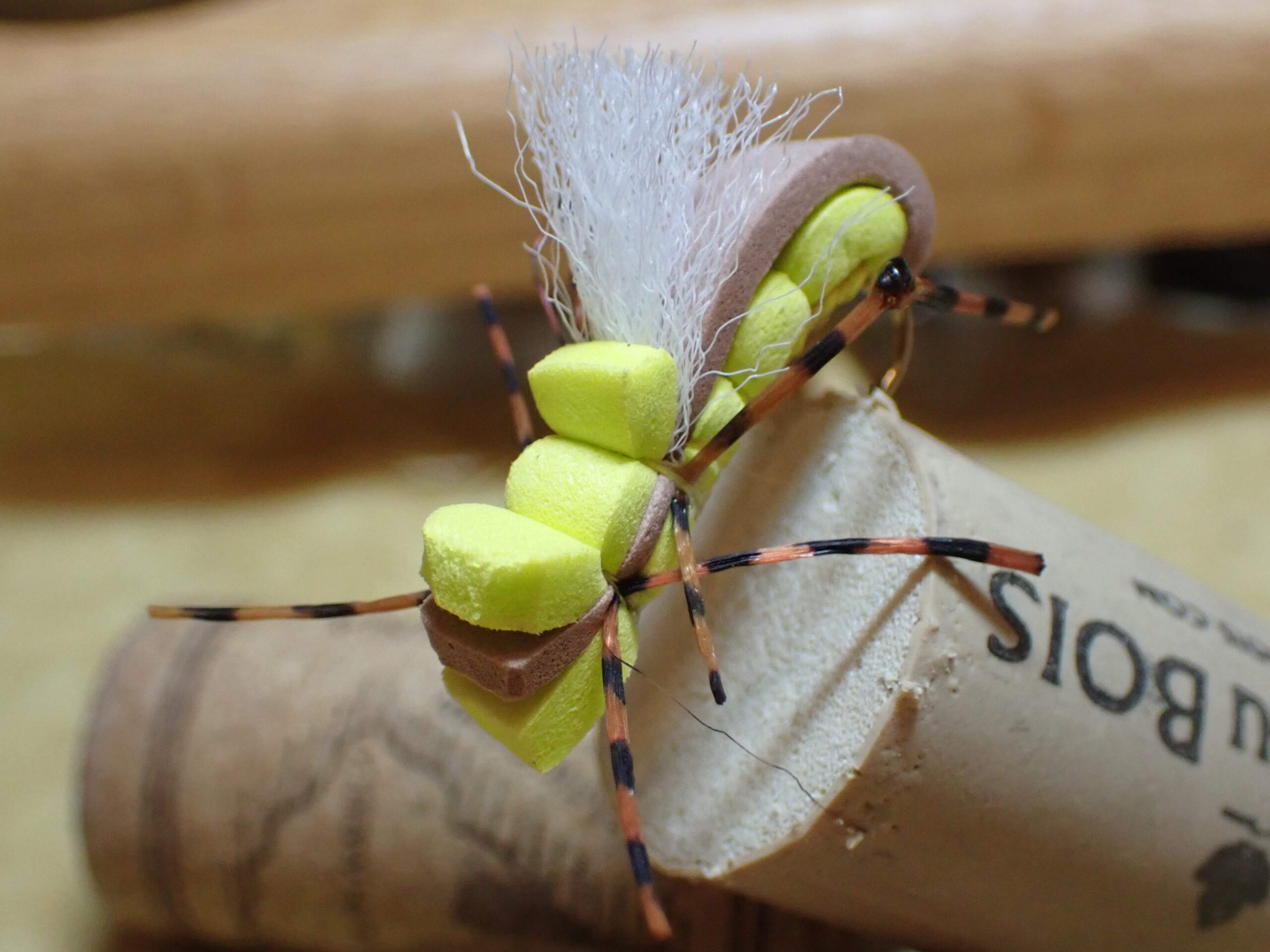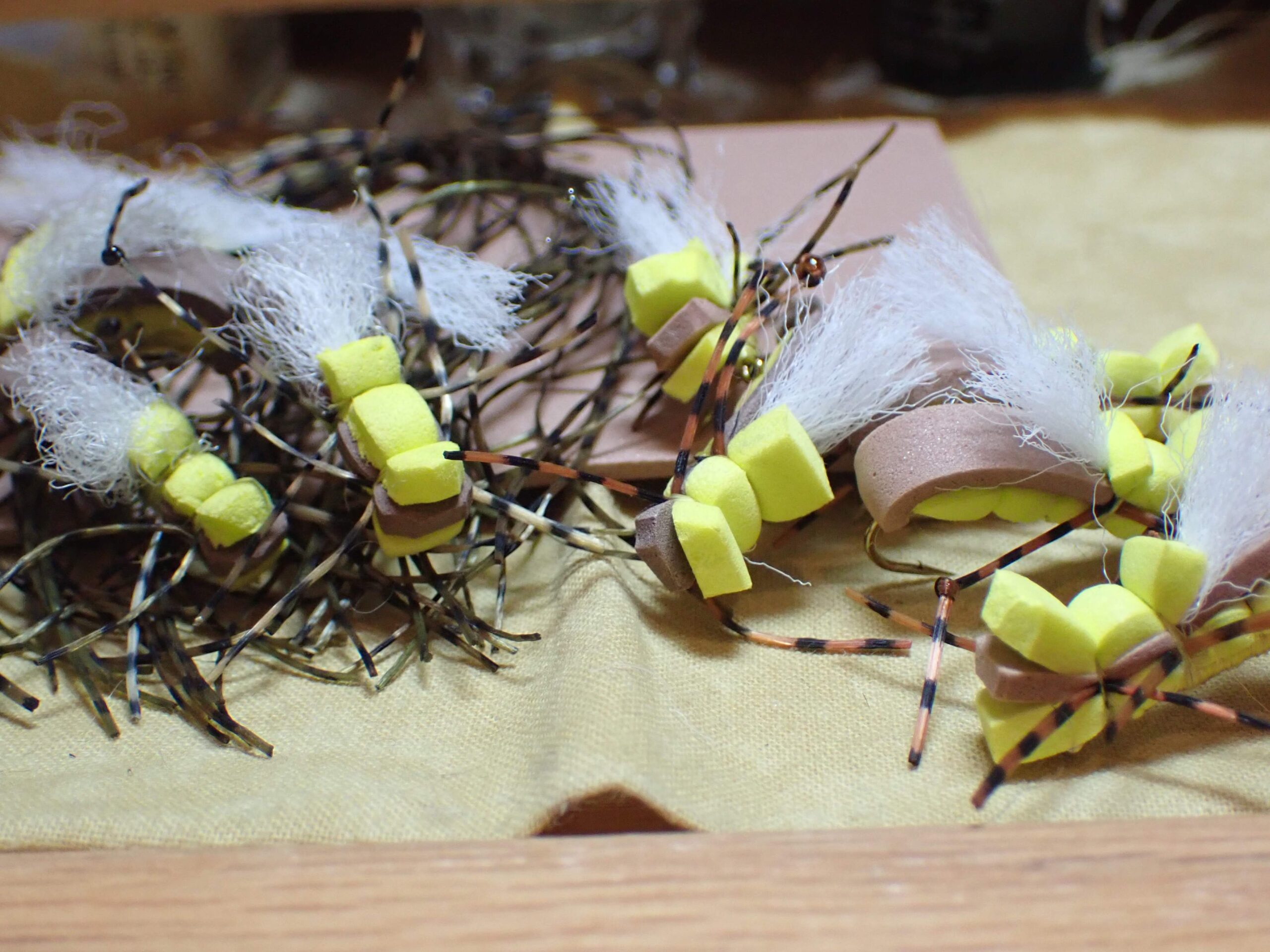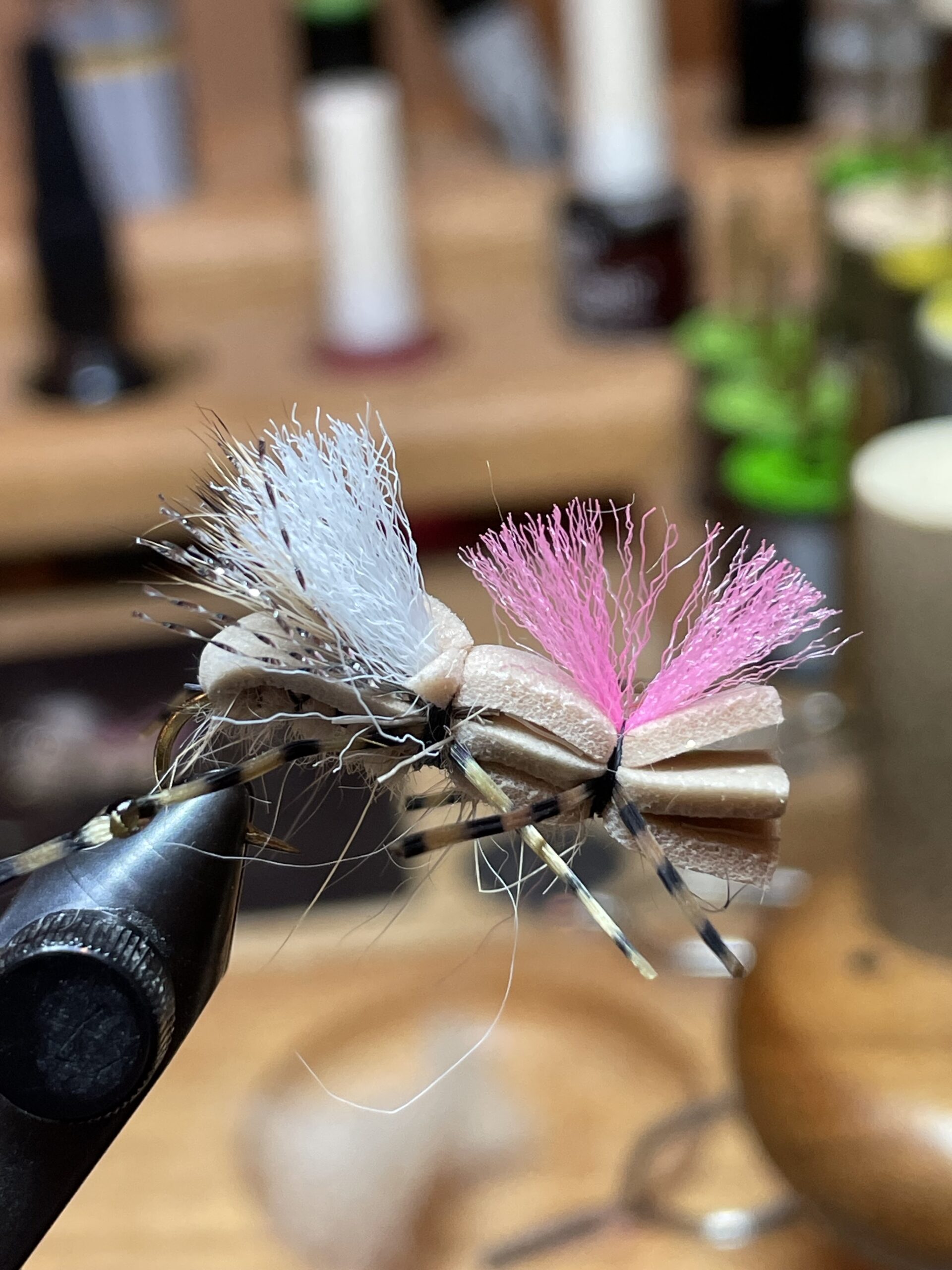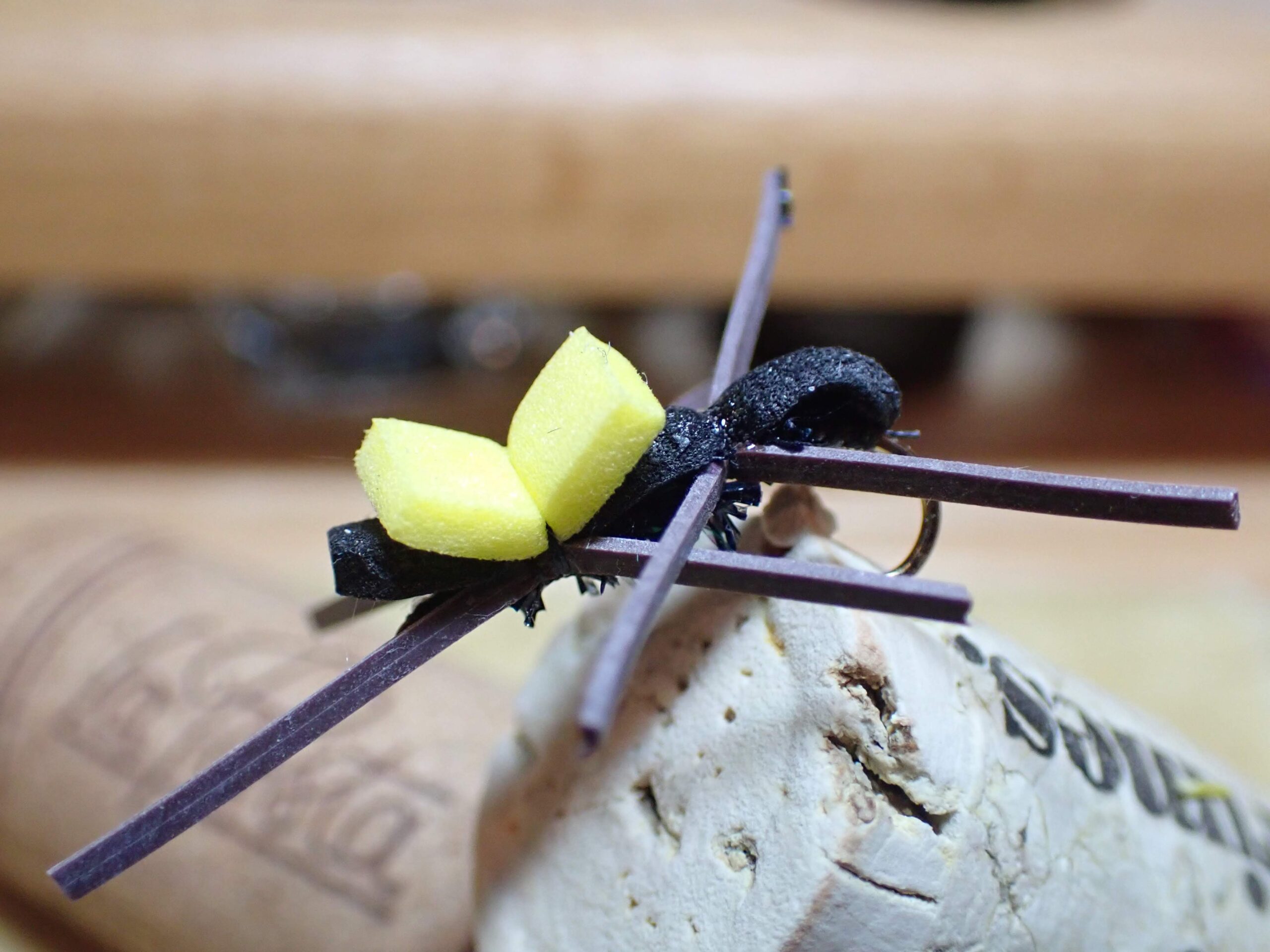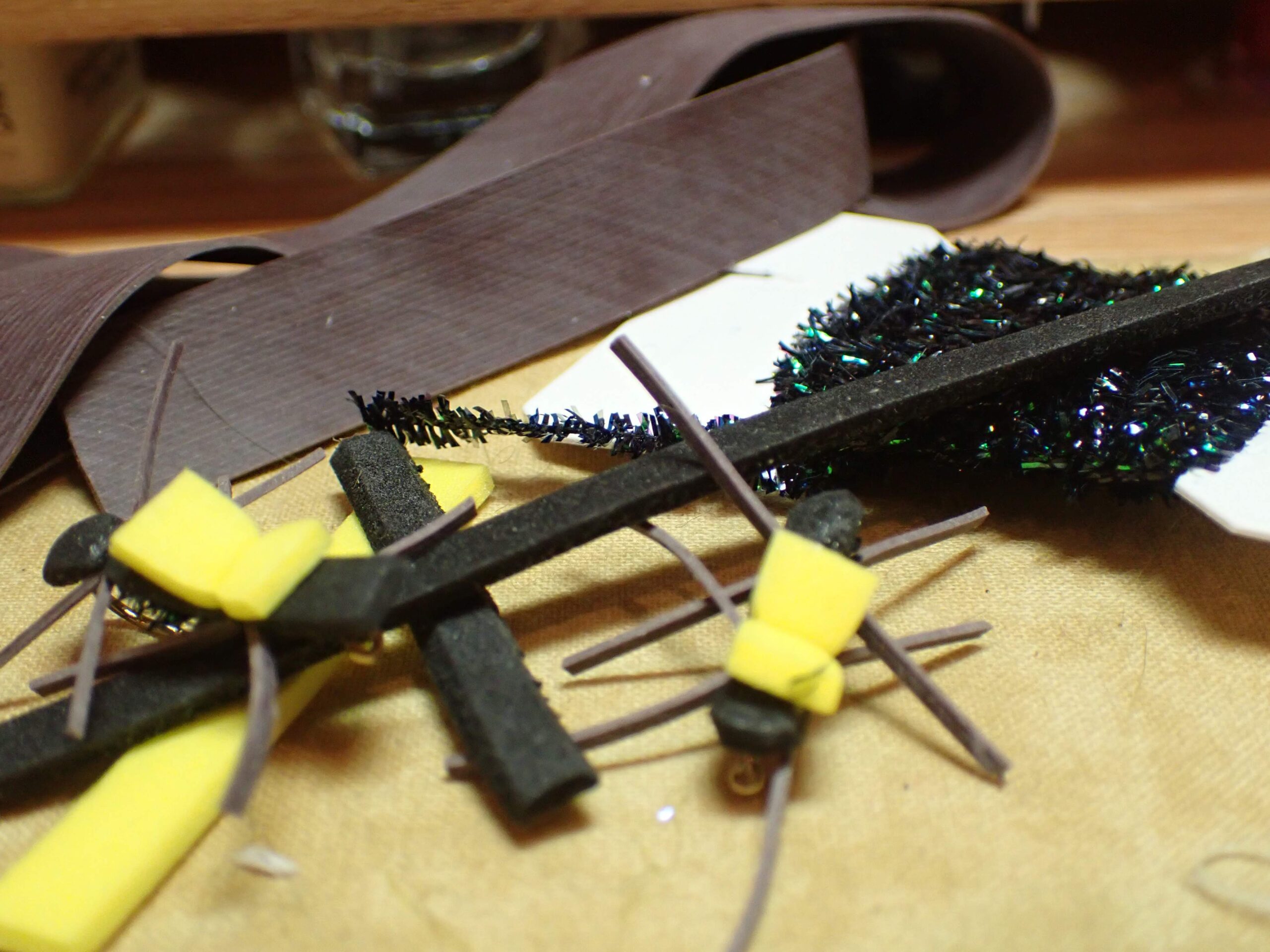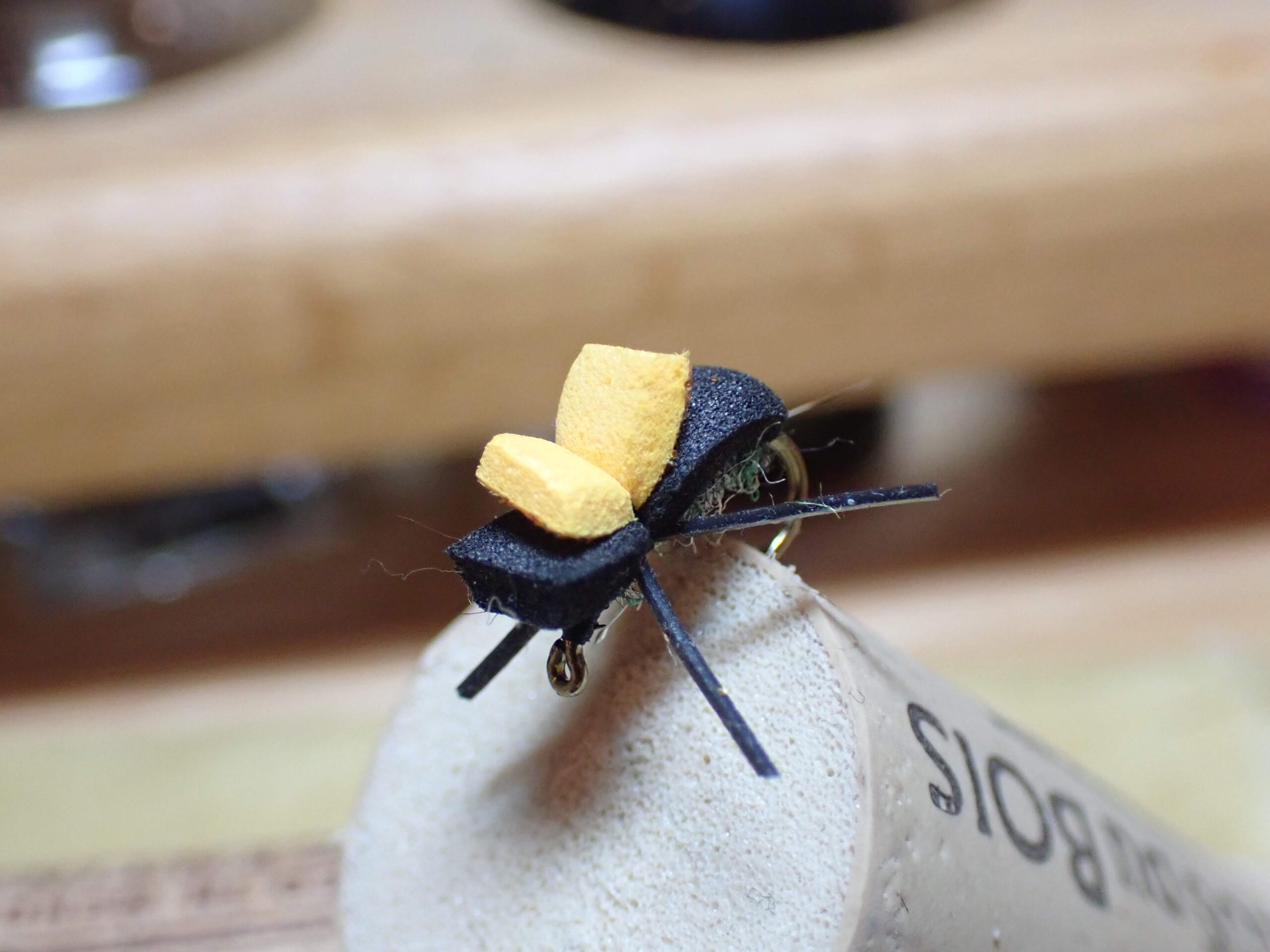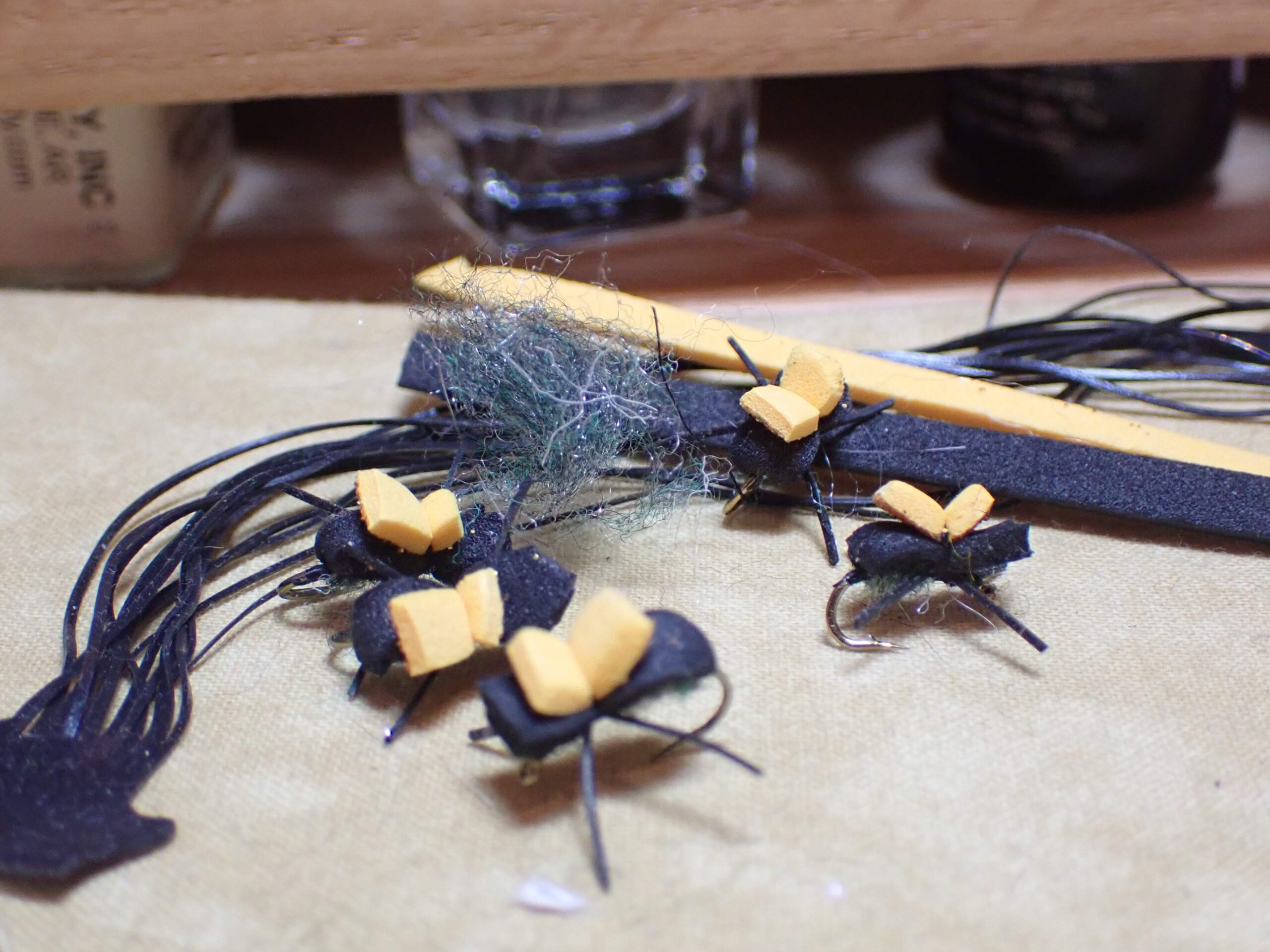Pool Toy Hopper 01/22/2023 Photo Album
The pool toy hopper is in all likelihood the foam fly that logs the most time on my leader other than the hippie stomper. If you search the web for foam hopper imitations, you will find hundreds of patterns. Imitating a grasshopper seems to be the fly tying equivalent of building a better mousetrap. It seems that every fly designer takes a crack at creating a better hopper. Are there better hopper patterns out there than the pool toy hopper? Probably, but this fly has served me quite well for many years now, so I remain loyal to it.

Very Clean Look
I also tie fat Alberts, and in all honesty the pool toy and fat Albert are very similar flies. For some reason I use the fat Albert in situations, where I am not primarily imitating a grasshopper, but instead I am using the surface fly as a strike indicator. I also tie fat Alberts with yellow bodies and pool toy hoppers with tan bodies. If I were to vary size and body color, perhaps these flies would perform in comparable fashion. Nevertheless, at my age and at this stage of my fly fishing career, I abide by the phrase, “if it ain’t broke don’t fix it”.

Waiting for Rework
The pool toy hopper was created by one of my favorite designers, Andrew Grillos, and I regard him as one of the foremost architects of foam flies. I actually took a tying class with Andrew, and this may also influence my bias toward the pool toy. For additional background information and links to a materials table and directions to tying instructions, follow this link, 02/04/2022.

Eleven Refurbished and Two New
When I counted my pool toy hoppers, I discovered that I had quite a few damaged flies to refurbish. Nearly all of them were missing legs, so I simply tied on some thread and added legs to create eleven refurbished hoppers. I also tied a couple from scratch to remain in practice.
Like this:
Like Loading...

